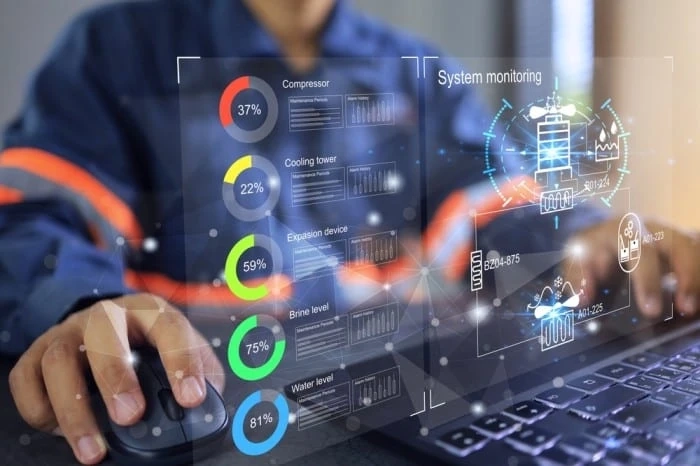Efficiency and organization are the cornerstones of effective commercial building management. In the hustle and bustle of daily operations, maintaining a smooth-running facility is essential. This is where Computerized Maintenance Management System (CMMS) software shines. In this comprehensive guide, we\'ll explore the world of CMMS software and how it can revolutionize facility management for commercial building managers.
Understanding CMMS Software
CMMS, an acronym for Computerized Maintenance Management System, is a powerful software solution designed to optimize maintenance operations in commercial buildings. Its rich feature set includes:
Work Order Management: Streamlining the process of generating, assigning, and tracking maintenance tasks.
Asset Management: Keeping a comprehensive record of all building assets and tracking their performance.
Preventive Maintenance: Scheduling and automating routine maintenance tasks to prevent breakdowns.
Inventory Control: Managing spare parts and supplies efficiently.
Reporting and Analytics: Providing insights through data-driven reports.
The benefits of CMMS software in commercial building management are vast. These include increased operational efficiency, cost savings, enhanced communication, regulatory compliance, and a positive impact on sustainability.
Choosing the Right CMMS Software
Selecting the appropriate CMMS software is a critical decision for commercial building managers. The following factors should guide your decision:
Scalability: Ensure that the software can grow with your building\'s needs.
User-Friendliness: Look for an intuitive interface to facilitate adoption.
Integration Capabilities: Assess its compatibility with other systems, such as IoT devices or accounting software.
Mobile Accessibility: Verify that the software can be accessed on mobile devices for on-the-go management.
Cost and Budget Considerations: Align the software\'s pricing with your budget constraints.
While we won\'t recommend specific software options in this article, we encourage you to research and select a solution that aligns with your building\'s unique requirements.
Implementing CMMS Software
Implementing CMMS software follows a structured approach:
- Needs Assessment and Goal Setting: Begin by identifying your facility\'s specific needs and set clear maintenance objectives.
- Software Selection and Procurement: Choose a CMMS solution that aligns with your goals and budget.
- Data Migration and System Setup: Migrate relevant data and configure the software to match your building\'s assets.
- Training and Onboarding: Ensure your team is proficient in using the software.
- Ongoing Support and Maintenance: Regularly update and maintain your CMMS system to ensure its optimal performance.
Challenges during implementation can be overcome with a strategic approach and strong team commitment. Measuring success is essential for determining the Return on Investment (ROI) that your CMMS software provides.
Utilizing CMMS Software for Maintenance Management
Once implemented, CMMS software becomes the heart of your maintenance management strategy:
Work Order Management and Scheduling: Streamline maintenance requests, prioritize tasks, and assign work orders efficiently. This keeps your team organized and ensures that no maintenance tasks fall through the cracks.
Asset Management: Keep track of your building\'s assets and monitor equipment performance. CMMS software provides you with a real-time overview of the condition of your assets, helping you make informed maintenance decisions.
Preventive Maintenance: Create maintenance schedules to minimize downtime and costly repairs. By addressing issues before they become major problems, you save on repair costs and reduce operational disruptions.
Inventory Control: Manage spare parts and supplies efficiently. CMMS software helps minimize inventory costs by tracking usage and automating reorder points.
Reporting and Analytics: Generate performance reports and make data-driven decisions. These insights help you optimize maintenance operations and allocate resources effectively.
Benefits of CMMS Software for Commercial Building Managers
The advantages of CMMS software in commercial building management are far-reaching:
- Improved Operational Efficiency: CMMS software ensures that maintenance operations run smoothly. With streamlined work orders and asset management, your team can work more efficiently.
- Cost Savings through Preventive Maintenance: By addressing issues before they become major problems, you save on repair costs and reduce operational disruptions.
- Enhanced Communication and Transparency: Everyone involved in maintenance tasks can access the information they need, fostering a transparent and collaborative environment. This leads to quicker issue resolution and improved accountability.
- Compliance and Documentation: Easily track and maintain records for regulatory compliance. CMMS software simplifies compliance by providing a clear audit trail of all maintenance activities.
- Sustainability and Environmental Impact: Monitor energy usage and equipment efficiency to reduce your building\'s environmental footprint. CMMS software supports your sustainability initiatives by providing insights into resource consumption and waste reduction.

CMMS Software Best Practices
To make the most of your CMMS software, follow these best practices:
Regularly Update and Maintain Your CMMS System: Software updates and regular maintenance are crucial to ensure optimal performance and security.
Ensure Data Accuracy and Completeness: The accuracy of data within the CMMS system is vital for making informed decisions. Regularly review and update asset and maintenance records.
Foster a Culture of Maintenance within Your Team: Encourage all team members to take ownership of maintenance tasks and report issues promptly. Effective communication and a proactive approach to maintenance will result in a smoother operation.
Continuously Improve and Optimize Maintenance Processes: Leverage the insights provided by the CMMS software to identify areas where maintenance processes can be improved. Encourage a culture of continuous improvement within your team.
Conclusion
In the dynamic realm of commercial building management, organization and efficiency are paramount. CMMS software offers a comprehensive solution for achieving these objectives. As the field continues to evolve, it\'s essential for commercial building managers to adapt and explore the potential of CMMS software. By adhering to best practices and selecting the right CMMS system, you can transform your maintenance operations and create a more sustainable, cost-effective, and transparent future for your commercial facility. The future of facility management is digital, and CMMS software is at its core. Embrace this technology, and your building management will never be the same again.



